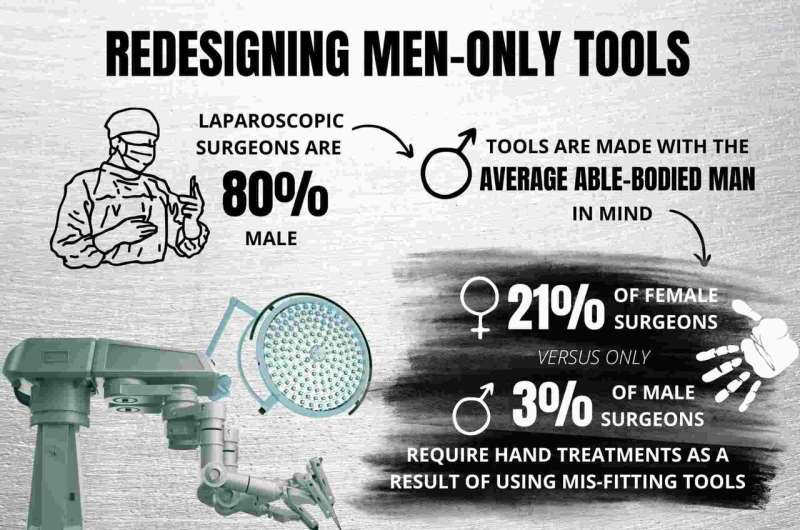
We all are likely to underestimate the daunting physical barriers faced by female employees due to the prevalence of working tools designed for men, but previous research has documented such an effect in various sectors. In construction, where the majority of the tools are sized for a man of average stature, for example, musculoskeletal disorders are common among female workers. In the U.S. military, weapons systems were required to accommodate a user with 5th to 95th male percentile body dimensions, which prevented many women from flying fighter planes.
What is still undocumented, though, is what happens when more adaptable tools, that require less physical force to operate, are introduced.
Harsh Ketkar (Bocconi Department of Management and Technology), Seth Carnahan (Washington University in St Louis), and Brad Greenwood (George Mason University) observed the introduction of robotic tools adaptable to a surgeon’s physique in laparoscopic surgery, and concluded that it disproportionately improved female surgeons’ performance and their well-being. While these tools were beneficial for both male and female surgeons, they improved performance and well-being to a greater extent for female surgeons. At the same time, though, gender differences in status still limit women’s access to the new platforms.
In standard laparoscopic surgery, the surgeon operates by standing over an elevated table and manipulating a variety of unadaptable tools (e.g., staplers, graspers). Because laparoscopic surgeons are 80% male, tools are often made and purchased with the average able-bodied man in mind, with the consequence that 21% of female surgeons (versus only 3% of male surgeons) require hand treatments as a result of using misfitting tools.
However, more adaptable robotic surgical platforms (i.e., da Vinci surgical suites), which require less physical force to operate, have begun to replace these older tools. As such platforms provide the surgeon with a seated and adjustable station from which they can manipulate a robotic arm, female surgeons may benefit from the use of these tools more than their male colleagues. Preliminary surveys suggest that surgeons report lower, sex-equivalent rates of discomfort when using robotics.
Analyzing a Florida dataset of 637,783 patient admissions from 2009 to 2015, where the primary procedure performed was a laparoscopic surgery (robotic and traditional), the authors observe that the introduction of robotic platforms led to performance improvement both for men and for women. The improvement, though, was roughly double for female than for male surgeons.
A surgeon’s performance was measured by a patient’s length of stay in the hospital. Shorter hospital stays suggest, in fact, that the patient experienced fewer complications from the procedure.
The improvement was driven by female surgeons with a high recent workload (because they were more fatigued by an intensive use of standard tools) and working in male-dominated units (where standard tools are particularly tailored towards men’s average physical characteristics).
Female surgeons allowed to use robotic tools also recorded a slightly lower turnover, thus showing their appreciation for organizations that provide them with adaptable job tools.
Source: Read Full Article
